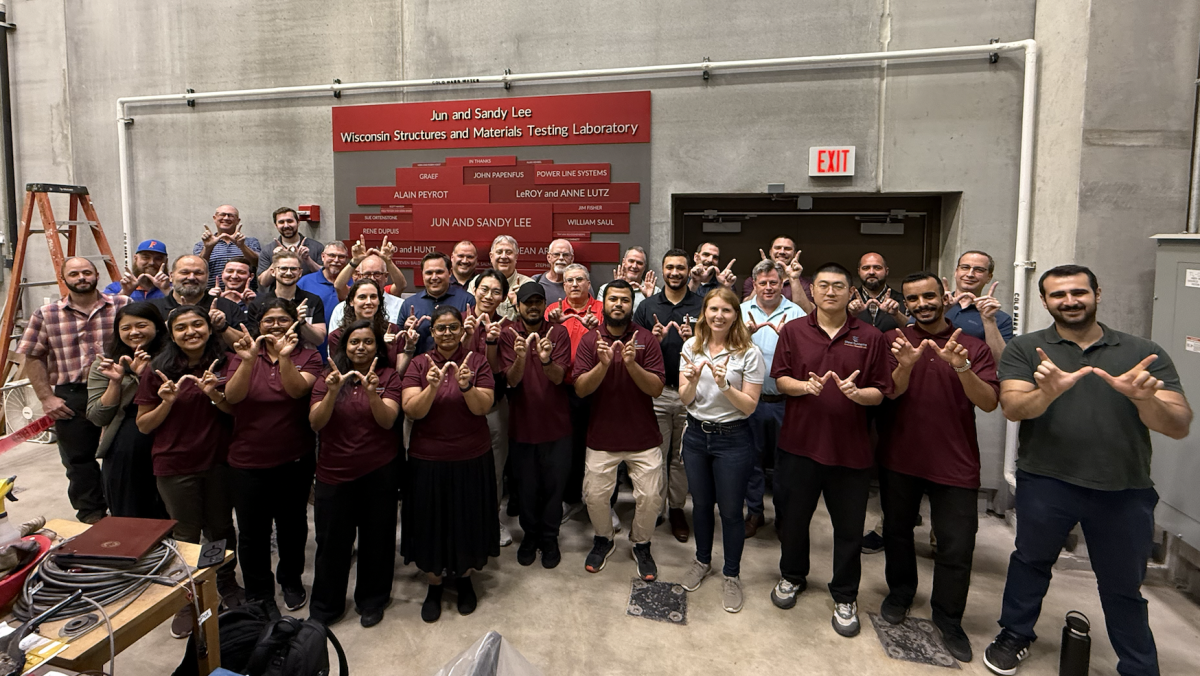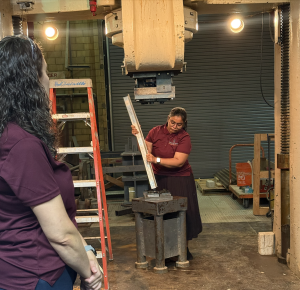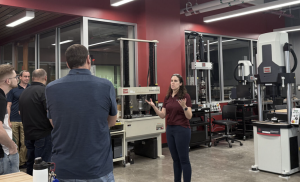
On August 11, 2025, Steel Deck Institute (SDI) members gathered at the University of Wisconsin–Madison College of Engineering for their quarterly meeting—and enjoyed the chance to see firsthand how their investments in research are shaping the future of steel deck construction. Hosted by Hannah Blum, the Alain H. Peyrot Associate Professor in Structural Engineering, and her research team, with support from the college’s Office of Corporate Relations, the event blended technical exploration with meaningful connection.
Founded in 1939, SDI is a trade association representing a national network of manufacturers and associates dedicated to advancing steel floor and roof deck systems used in residential, commercial, and industrial buildings. With 30 manufacturing members and 11 associate members, the organization plays an important role in setting industry standards and supporting innovation.

SDI members were welcomed into the College of Engineering’s research community. Blum’s Steel Systems Innovation Research Lab opened their doors, inviting guests to tour facilities, engage with students, and explore projects funded by SDI. The atmosphere buzzed with curiosity and collaboration.
Students presented their research in short, dynamic talks that sparked lively discussions between future engineers and seasoned professionals. The SDI-sponsored event that followed gave everyone a chance to connect more personally, fostering the development of new relationships throughout the steel industry.
“We showed SDI members that we made good use of their funds and our capabilities for future projects,” Blum reflected. “And the students did amazing. They got to practice presenting their research to industry, which is a different approach than they’re used to.”
One highlight of the day was showcasing a new piece of research equipment: the SEAhorse vacuum box. Designed by SDI Technical Director Dr. Thomas Sputo in collaboration with Blum, the box is a cutting-edge tool for testing steel deck and joist products. Using advanced remote sensing technology inside the box, 3D data can be captured and analyzed to improve product performance and design. The vacuum box was made possible through SDI donations and in-kind contributions from member companies—a true testament to the power of partnership.
Sputo, who helps bridge the gap between industry needs and academic capabilities, was proud to showcase the collaboration. “One of my responsibilities is to help facilitate getting SDI needs fulfilled by university researchers,” he said. “I was happy to provide a forum where Hannah could demonstrate what her team is doing not only for SDI members, but also for numerous other areas of steel construction.”

By the end of the day, it was clear that the event had done more than just showcase research—it had strengthened the bonds between steel deck researchers and industry professionals. These relationships are essential for advancing technology and closing innovation gaps. For SDI members, it was a chance to see their investments in action. For Blum and her team, it was an opportunity to demonstrate their leadership in shaping the future of steel systems.
“Hannah and her students demonstrated their capabilities very well to the SDI membership” said Sputo. “The SDI wants to express how much we value our strong working relationship with Professor Blum, and we want to continue it in the future for years.”
• • •
Featured image: SDI attendees and UW–Madison students pose with Blum in the Jun and Sandy Lee Wisconsin Structures and Materials Testing Laboratory.
Author: Bri Meyer, Research Impact and Outreach Communications Specialist